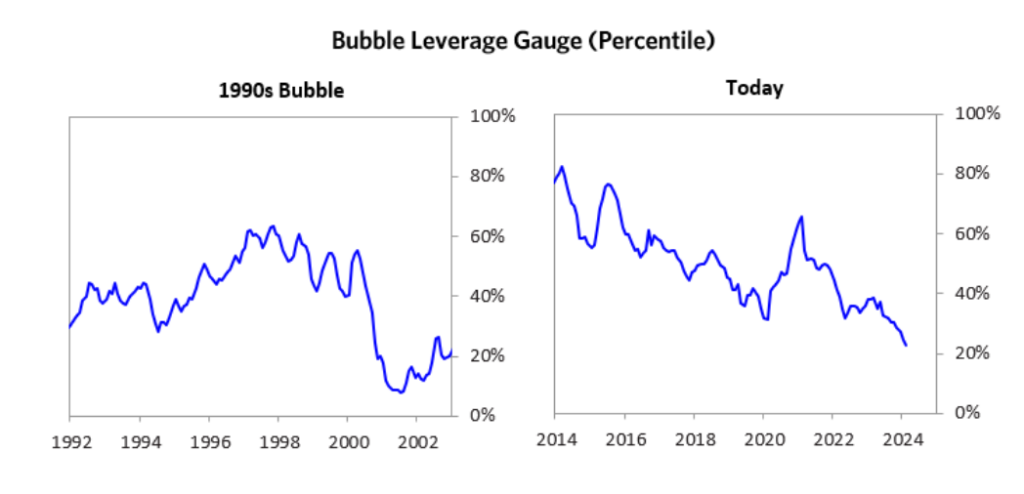
The US equity markets started off 2024 on a surprisingly strong note. In particular, a few names related to artificial intelligence have seen their prices continue to hit new highs. Nvidia and AMD, for example, have been up +78% and +43% year-to-date (as of March 11, 2024). The drastic run-up in share prices has led many investors to ask – are we in a tech bubble like in 1999?
The famous billionaire investor, Ray Dalio, says that we are not in a stock bubble, at least not yet. Here is a summary of his thoughts and analysis.
Who is Ray Dalio and what is his bubble indicator?
Ray Dalio is the founder of the world’s largest hedge fund firm, Bridgewater Associates, which manages US$124 billion. He’s been a hedge fund manager for over 50 years and has witnessed a few bubbles in the capital markets firsthand.
To make sense of the market, he developed a “bubble indicator” to help keep track of market conditions. Dalio’s bubble indicator has six big questions to figure out what’s going on in the market. According to Dalio, the bubble indicator is at the 52nd percentile, meaning that we’re not in a bubble right now. But let’s take a deep dive into some of these questions to see if we’re heading for a tech-stock bubble like it’s 1999.
Ray Dalio’s Bubble Indicator (1 March 2024):

The first question is checking if the stock prices make sense compared to fundamental metrics such as earnings or book value per share. Currently, US stock prices are hovering around the 73th percentile, above historical trends, but have not reached an extreme.
How high are prices relative to traditional measures?

Are prices discounting unsustainable conditions?
To spot a bubble, it’s important to check if stocks are reflecting some unrealistic future. Back in the dot bubble days, Cisco’s two-year forward P/E ratio was a whopping 100! In comparison, Nvidia’s two-year forward P/E ratio is around 27. While Nvidia’s share price has soared, so have its earnings. When you look at the broader picture with those Magnificent 7 companies, their market caps have grown in line with actual earnings. Overall, the Magnificent 7 appears expensive but not in a bubble territory.
How broadly positive is investor sentiment?

This question measures the market sentiment about the market, which is crucial in determining the future price movements. Right now, the investor sentiment is neutral to slightly positive but not excessively bullish.
Are Purchases Being Financed by High Leverage?
Leveraged purchases can be vulnerable to forced selling during a market downturn. During the tech bubble in 1999 and the post-pandemic euphoria period in 2021, the leverage gauge was at the 60th to 70th percentile. The current leverage gauge stands at the 23rd percentile, indicating a relatively healthy level.

Bottom Line
So, after looking at Dalio’s indicator and comparing notes with history, it seems like the overall market has not reached bubble territory. Based on these indicators, the Magnificent Seven stocks appear frothy, but their earnings have been growing strongly over the years to justify a large part of the price increase.
That said, this does not mean that the stock market will be one-way up. Historically, the S&P 500 has experienced an average drawdown of 14% each year.
The analysis that the current market is not in a bubble condition may provide investors with more reassurance to stay invested. Meanwhile, building a diversified portfolio is still important to ensure a smoother journey through periodic pullbacks in the market.
Overview of Magnificent 7 Performance Year to Date















